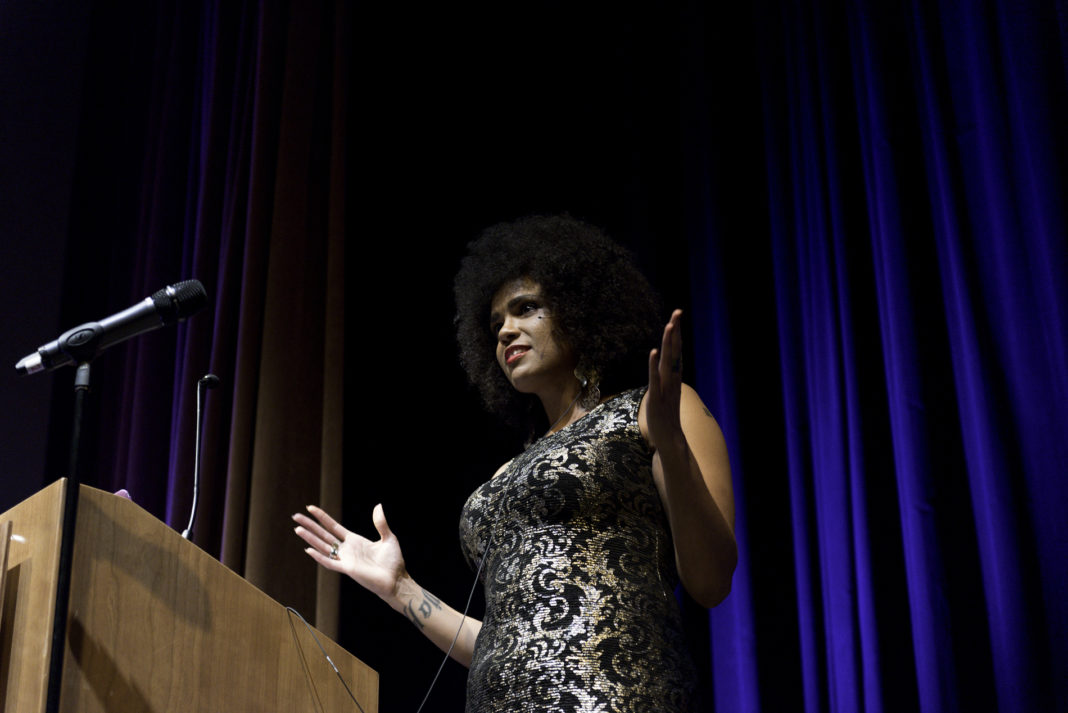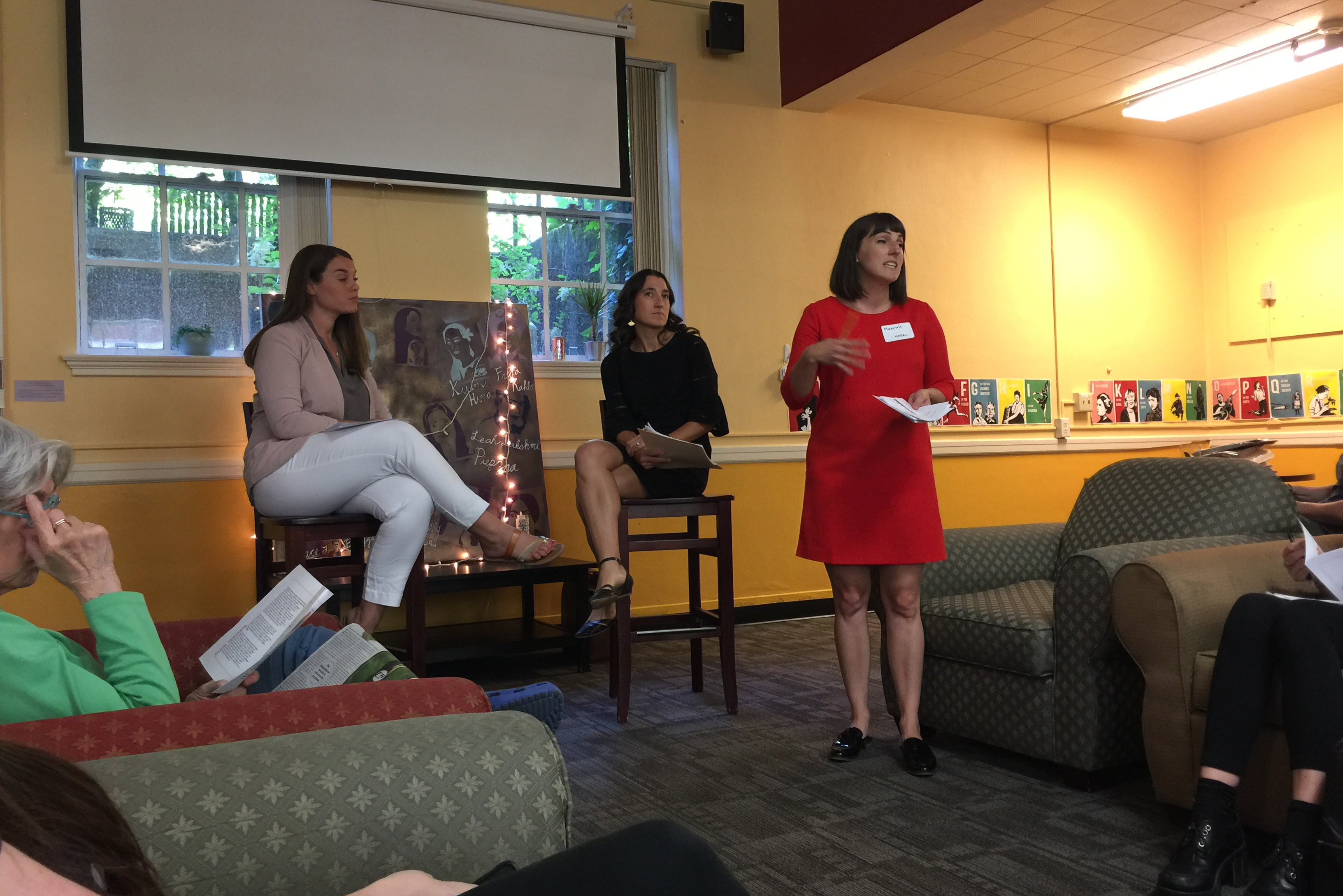With additional reporting by Andy Ngo
Thursday, July 7, the day was beginning to fade, but for the Portlanders involved in the anti-police brutality protest organized by Don’t Shoot Portland, it had only just started.
“How many more victims do we need?” Don’t Shoot Portland organizer Teressa Raiford asked a crowd of hundreds outside the downtown Apple Store, partway into the action.
This year, the U.S. is over halfway to breaking triple digits in terms of police-related deaths.
Alton Sterling, according to the Guardian, was the 558th person to die at the hands of U.S. law enforcement in 2016. Sterling, 37 and African-American, was shot by police on July 5 in Baton Rouge, Louisiana following an anonymous call to police that he’d shown a firearm.
The full account of the killing is still being established, and involved officers are on administrative leave, according to CNN.
Just a day later, Philando Castile, 32 and also African-American, was shot four times after being pulled over for a broken tail light in Falcon Heights, Minnesota. He died in a local hospital. In response to both deaths, Portlanders congregated in Pioneer Square to participate in a peaceful protest organized by Don’t Shoot PDX, an activist community that grew out of the events that took place in Ferguson, Missouri in 2014.
It is estimated that black Americans are 2.5 times more likely to get killed by the police, according to the Washington Post. The same amount of white and black unarmed Americans have been killed by the police, analysts say, but the overall population of white Americans is five times larger.
The same night of the protest, former army veteran Micah Xavier Johnson used an AR-15 style rifle, according to Mirror, to “carry out a coordinated ambush” targeting white police officers at a Black Lives Matter protest in Dallas, Texas. The attack left five police officers and Johnson dead. After an “intense firefight,” Johnson was blown up by a robot bomb. The officers killed were Senior Corporal Lorne Ahrens (48), officer Michael Krol (40), Sergeant Michael J. Smith (55), officer Patrick Zamarripa and Dallas Area Rapid Transit police officer Brent Thompson.
“We’re sworn to protect you and your right to protest, and we’ll give our lives for it,” Dallas Police Chief David Brown told CNN Sunday.
“And it’s sort of like being in a relationship where you love that person, but that person can’t express or show you love back,” he said. “I don’t know if you’ve been in a relationship like that before, Jake, but that’s a tough relationship to be in, where we show our love…there’s no greater love than to give your life for someone, and that’s what we’re continuing to be willing to do.”
President Barack Obama also spoke of the recent tragedy in a NATO summit in Warsaw, Poland.
“The demented individual who carried out these attacks in Dallas, he’s no more representative of African-Americans than the shooter in Charlestown was representative of white Americans or the shooters in Orlando or San Bernardino were representative of Muslim Americans…They don’t speak for us, that’s not who we are,” Obama said.
Obama still hopes to pass tighter gun laws, despite Congress rejecting access.
“I firmly believe that America is not as divided as some have suggested,” he said. “Americans of all races and all backgrounds are rightly outraged by the inexcusable attacks on police, whether it’s in Dallas or any place else. That includes protesters. It includes family members who have grave concerns about police conduct, and they have said that this is unacceptable.”
Hundreds hit the streets
Vanguard’s video feature of the Portland protest on July 7, 2016. Andy Ngo/PSU Vangaurd
The rally initiated at Pioneer Square, where multiple people spoke to the crowd.
One participant told the crowd, “At the end of the day it’s going to be you against them. I’m not coming out here for the rally. When we move with the Panthers, trust me, when you see me move, I’m moving in violence. I’m moving in retribution for my ancestors.”
He ended his speech with, “Good thing we didn’t turn the tables yet or I’ll lynch you motherfuckers.”
One young speaker addressed the fact that a child was being shot because they were holding a pellet gun, referring to the Tamir Rice case.
Another participant in a camo jacket, a significant influence throughout the march, said to “put your phones down,” emphasizing that taking videos, social media and virtual communication was not enough, and that there needs to be more action.
“Stop filming. Give somebody else your phone. [Police violence] has to stop,” he said.
There were enough attendees to fill an entire city block, sidewalk to sidewalk.
From Pioneer Square, marchers headed to the Justice Center. Together, protesters chanted “I am a revolutionary!” and referenced singer James Brown’s “Say It Loud—I’m Black and I’m Proud.” Protesters repeatedly called for newly appointed Police Chief Mike Marshman to come outside and speak. He did not show.
It was there, as different activists took turns speaking to the large crowd, that Michael Strickland—a notorious Laughing at Liberals contributor—pulled out a handgun. Several participants in the demonstration ran off the scene, many visibly shaken.
Strickland was arrested by Portland Police during the protest in front of the Justice Center. He has since been charged with two felony counts of unlawful use of a weapon after initial charges of menacing and disorderly conduct.
From there, the group headed outside the Apple Store, where Raiford and others spoke. Former PSU student Alyssa Pagan, took time to recite the names of both Sterling and Castile four times each. “This is beautiful chaos,” Pagan said, noting that demonstrations weren’t the be-all and end-all of instigating change. “I want people to be able to see their power.”
Shortly after, protesters headed down Southwest Fourth Street in a silent march. Some held candles—presumably in memorial—while standing in silence outside the courthouse, the air punctured by the sole sound of a crying infant. The quiet was eventually broken by chants of “Hey hey, ho ho, these racist cops have got to go” and some crowd dancing.
Throughout the march, police kept a close watch on the crowd, but from a distance. One helicopter was monitoring from above the Justice Center, and police cars and bikes blocked roadways a block or two ahead of the crowd. Even then, only one or two police vehicles barricaded the roadways, and no cops in riot gear were present during that portion of the march, other than the conflict with Strickland.
Eventually, the group made its way to the Morrison Bridge, where some faced Portland Police in riot gear on the on-ramp, and others waited below on Naito Parkway. There were multiple police vans and cars, blocking the Morrison on-ramp. Other than verbal intimidation from the protestors to the riot police, no physical violence was portrayed from the activists.
An hour and a half later, those waiting down below the bridge grew restless. Raiford emphasized that political protest is but a small part of anti-police violence activism. “We’re on the front lines all the time…start getting people involved in our organizing and our educational workshops, because we do fuck with this legislative action, and we do know our constitutional rights. And we do workshops so that people can understand what to do with them [rights],” Raiford told the crowd.
She then asked the crowd how many had been personally affected by police violence, and a handful of people raised their hands. “You’re not informed, you’re not all intellectually satisfied with what this situation is talking about. If you don’t know what’s happening in your own backyard, then you’re blind to the facts. Wake up, we’re going home, y’all. Peace,” Raiford said.






